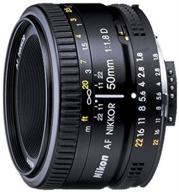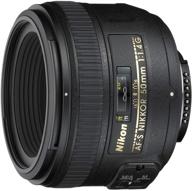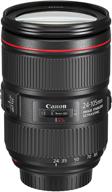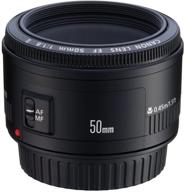
Review on 📷 Black Rokinon FE14M-C 14mm F2.8 Ultra Wide Lens for Canon by Heather Lawson

Almost Perfect for SLR Cameras Lenses
This lens is great. This is one of the most popular night vision glasses currently available on the market. Here's what I found: Pros: 1. This lens is orders of magnitude cheaper than similar lenses. It typically costs over $2,000 to get a fast prime lens like this, and for a fraction of that price, this lens sweeps the competition away. Spicy. This lens has excellent optics and takes sharp corner-to-corner shots at f/8. Wide open, it's a little softer in the corners, but that's how it is unless you're willing to shell out $5,000, which probably won't change.3. Almost no coma or chromatic aberration. For those who don't know, coma is when points of light appear as streaks or dots. The only time this actually happens in a practical situation is when you're photographing stars. Even on much more expensive Canon and Nikon lenses, corner stars look like ugly streaks, this lens has one of the best coma corrections out there. Disadvantages: 1. Completely manual. This may or may not be a disadvantage for you, but in the age of autofocus and automatic it certainly takes some getting used to. All of my first 20 shots with this lens looked awful due to being out of focus and underexposed. After spending some time learning how to properly use a manual lens, these problems went away.2. Distortion. This is not a very good lens for architecture. This lens has quite a bit of mustache distortion. This can be corrected in post-processing by searching online for the right lens profiles, but it's not ideal if you're shooting buildings and man-made structures professionally. However, if you're using this lens to shoot landscapes, nightscapes, or just anything other than architecture, you'll never notice any distortion and don't need to worry about it. focus bar off. This is the only reason I gave this lens 4 stars instead of 5. From what I've read, this is a common problem with these lenses. For some reason the focus distance scale is set incorrectly. If you google this lens you can easily find instructions on how to attach the focus ring and set it to the correct distances. However, after doing this, I found that it was actually more subtle than just the wrong distance scale. With my particular lens, I found that I got maximum sharpness for objects 1 mile away when I set the distance scale between the 7ft and 10ft marks on the lens. This is quite far from the sign of infinity. However, at night when I tried to photograph the stars, I found that I got the maximum sharpness of the stars when the focus was set a little further than infinity. In most cases you would expect 1 mile to be essentially infinity when it comes to lenses, but for some reason there is a big difference between 1 mile and infinity. After doing enough testing and seeing the test shots 100%, I was able to re-mark my lens with simple tape for the correct position in different situations. It should be noted that this is only really a problem if you're shooting wide open at f/2.8. At f/8, everything is extremely sharp and focused no matter where you focus, due to the tremendous depth of field of such a wide-angle lens.
- Lenses
- Some Cons
New products
Comments (0)
Top products in 👓 Lenses

Nikon 50mm f/1.8D Lens: Perfect for Nikon DSLR Cameras!

97 Review

📷 Nikon AF-S NIKKOR 50mm f/1.4G Lens with Auto Focus: Perfect for Nikon DSLR Cameras

76 Review

Black Canon EF 24-105mm f/4L IS II USM Lens - Model 1380C002

78 Review

Canon EF 50mm f/1.8 II Fixed Lens - Discontinued by Manufacturer

93 Review






